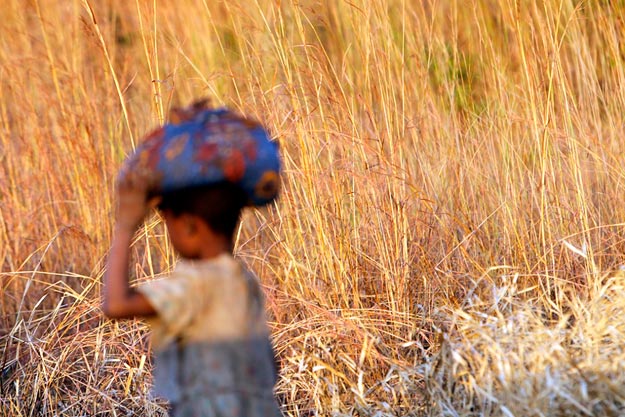The 2016 U.S. presidential election gave rise to concerns about how the next administration might—or might not—approach the challenges posed by climate change. Unfortunately, thus far, the current administration has not only ignored these challenges but also has taken steps to undermine efforts to combat them, such as announcing the U.S. intention to withdraw from the landmark Paris Agreement, rescinding the Clean Power Plan, and revoking former President Barack Obama’s Memorandum on Climate Change and National Security.

A young boy goes home with a bag full of grain he picked from a truck that overturned, in the forest in Machinga, about 200 kilometers northeast of Blantyre, Malawi, May 24, 2016.
Presenting one small sliver of hope at this year’s Conference of the Parties, acting Assistant Secretary for the Bureau of Oceans and International Environmental and Scientific Affairs in the U.S. Department of State Judith Garber noted that though “the United States intends to withdraw at the earliest opportunity, we remain open to the possibility of rejoining at a later date under terms more favorable to the American people.” However, the overall picture remains bleak.
The steps back from climate mitigation and response could not come at a worse time, given the rapidly accumulating costs of a changing global climate. As detailed in a previous Center for American Progress report, since 2011, the United States has experienced 84 extreme weather events, which have resulted in some 2,000 deaths and cost a total of roughly $675 billion in damages.3 Additionally, according to the most recent Global Climate Risk Index, between 1997 and 2016, “more than 524 000 people died as a direct result of more than 11 000 extreme weather events” around the world, which cost about $3.16 trillion in purchasing power parities.4 These costs, however, are not distributed evenly around the world; they disproportionately fall on the most vulnerable and least equipped to adapt and rebuild. For instance, as the Planetary Security Initiative calculates, from 2004 to 2014, 58 percent of disaster deaths occurred in countries considered to be ranked among the top 30 most fragile states on the Fragile States Index.
Despite the high costs of extreme weather events, investments aimed at reducing the risks posed by climate change abroad have been insufficient. As pointed out in a report by the U.N. High-Level Panel on Humanitarian Financing, for every $100 spent on development aid projects, “just 40 cents has gone into protecting countries from succumbing to natural disasters.” Driving the need for investment further, the report notes that “12 out of a group of 23 low-income countries received less than US$ 10 million for DRR [Disaster Risk Reduction] over 20 years while receiving US$ 5.6 billion in disaster response.”
This administration has compounded this problem by moving to slash spending on international and domestic institutions and mechanisms that actively work to prevent costly climate and humanitarian crises. However, it is clear that investing in preventive measures, whether they are aimed at conflict prevention or climate change resilience and mitigation, actually reduces costs in the long run. This is true monetarily and, more importantly, in terms of the cost to human lives and livelihoods. The United States should be making strategic investments to build resilience and allay costly future emergency responses—not cutting the already paltry investments in prevention.
In addition to these direct costs, there are also much higher indirect costs associated with climate-induced disasters, especially in fragile states. Climate change acts as a threat multiplier: Weather shocks and their resulting effects can create and exacerbate political, economic, and social tensions—potentially contributing to cycles of poverty, violence, and migration. As pointed out in a previous CAP report, Syria starkly demonstrates this risk. A prolonged drought linked to climate change devastated farming and herding communities in key agricultural regions, leading hundreds of thousands of rural Syrians to move to the cities. While the Syrian war’s causes are complex, the dislocation caused by the drought—and the Syrian government’s poor response to the crisis—exacerbated social, economic, and political tensions in rural areas and the cities to which many rural families migrated. This discontent underpinned the initial protests and shaped the conditions that led to the outbreak of conflict in 2011 and the resulting refugee crisis. To date, an estimated 465,000 Syrians have been killed and more than 5.3 million Syrians have been displaced.
Ignoring climate change and its effects will take an increasing toll on human lives and livelihoods, economic prosperity, and peace and security. To demonstrate these losses and the real security risks climate change can pose, this issue brief examines the nexus of climate change, water security, and food security in fragile states and highlights some of the threats to international peace and stability that can emerge—specifically, how these issues can drive instability, as well as how water and food are used during conflict as tools for recruitment and weapons of war.
Source: https://www.americanprogress.org/
Dear User/Visitor! Please, answer on our questions: tick off one of the positions – your answer will make us able to improve our site and make it more interesting and useful!

